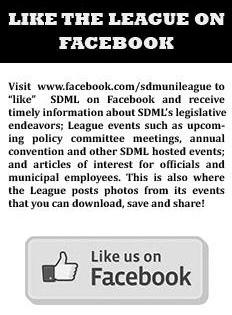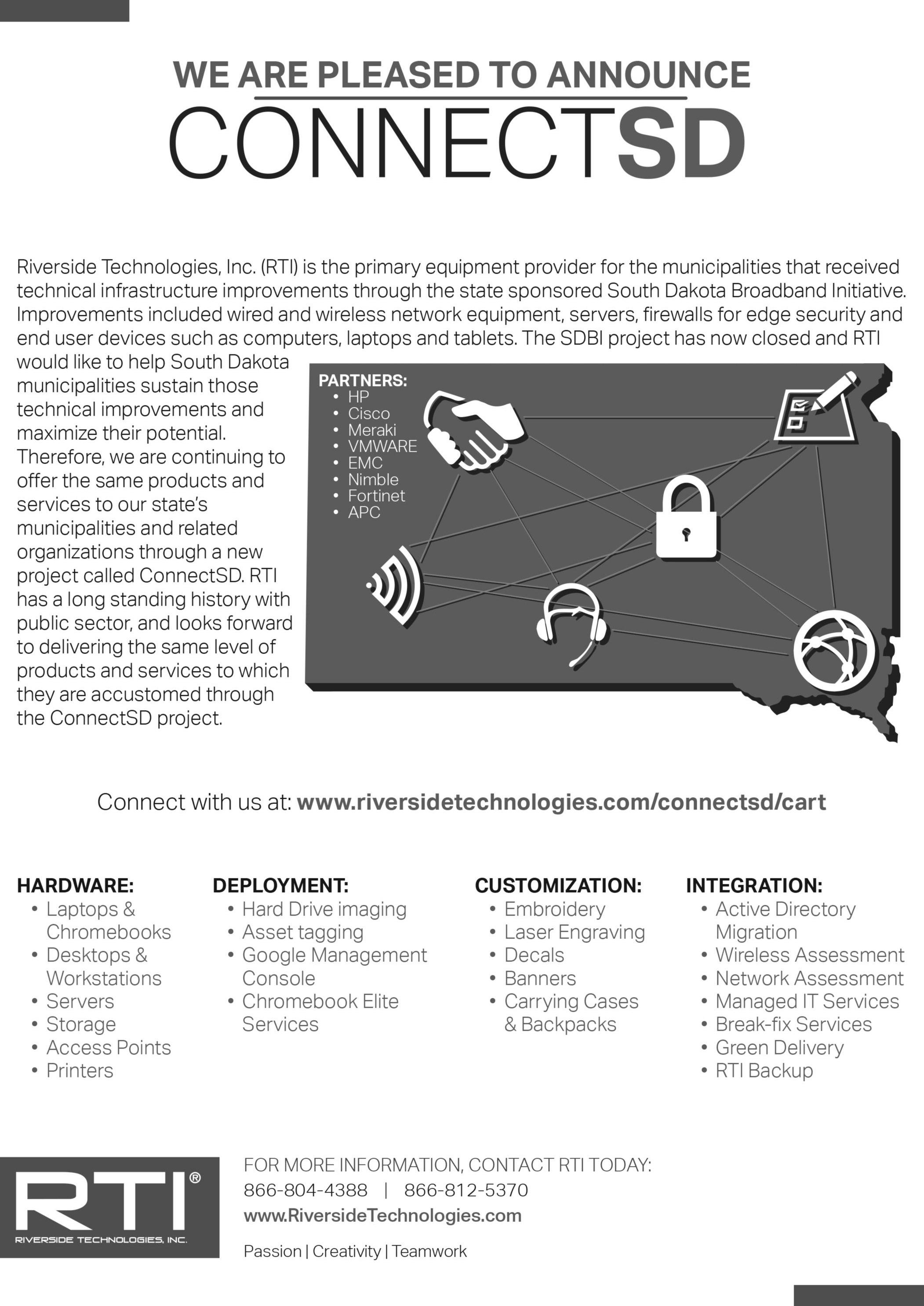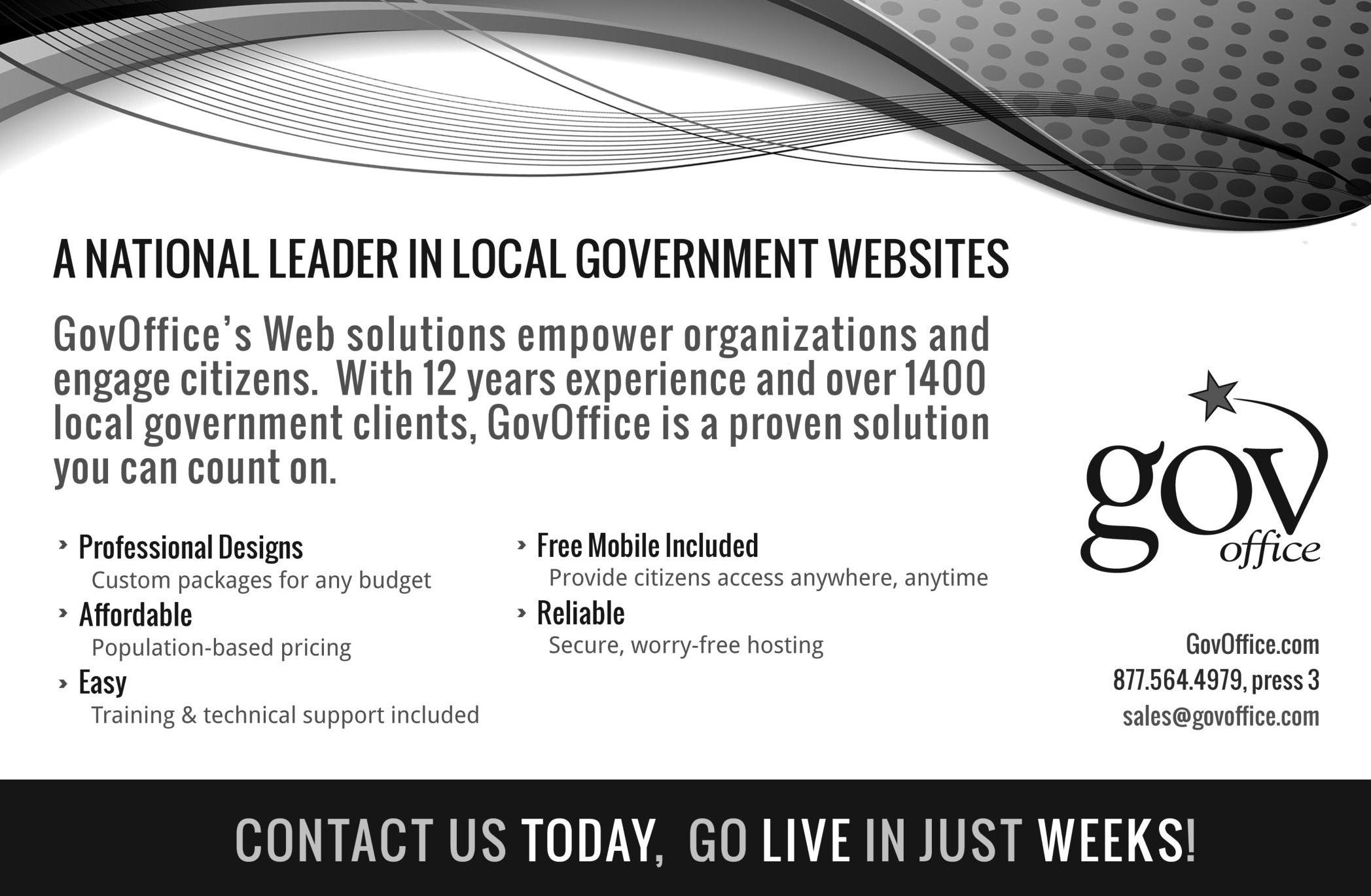
15 minute read
Promoting City Jobs
By Claudia Hoffacker
When White Bear Lake Mayor Jo Emerson spoke at Minnesota’s annual Girls State event this year, she had a surprising realization.
Advertisement
“I told them that if you ’re thinking about careers, cities need finance directors and city managers and city engineers and public works, and I just went down the list ofdifferentcityjobs, ”Emersonsays. “AndIcouldseethe lightbulb going on in their heads. A career in city government had never occurred to many of them before. ”
Now, as president of the League of Minnesota Cities (LMC),oneofEmerson’sgoalsistomakesurethatyoung people do think of city government when they think about their future.
“Girls State was perfect because you ’ ve got 400 young women who are juniors in high school, looking at college and starting to think about careers. It’s a great place to plant some seeds, ” she says.
Emersonwantstoexplorehowcitiescancontinueplanting those seeds throughout the year in more concrete ways— and not just for young people, but for anyone who may be on the hunt for a new job.
Aging city workforce
Getting young people—and others—to consider city careers is not just a nice thing to do. It’s essential because the city workforce is aging, and cities need to attract the next generation of employees.And they need people at all levels—from entry- to director-level positions. Emerson saysWhite Bear Lake is living proof that this is true.
“Our city manager retired a year-and-a- half ago, and our city attorney just retired. We have a few other key employees who will be retiring over the next few years, ” Emerson says. “So, I’m really feeling it in my city, and I want to see the next generation step up. ”
In support of Emerson’s goal, the League focused on city careers this year in its booth at the Minnesota State Fair. The booth had a superhero theme, and fairgoers had the chance to take an interactive quiz to discover their “superpower” and find out the city careers most likely to be a good match for them. They also had the opportunity to learn more about city careers and how they make a difference in the community.
About 5,000 people took the quiz— some were intrigued by the results and by the prospect of working for a city. Many people made comments about how they ’d never thought about applying for city jobs, but they could see now that their skills might be a good fit for a city. “I was very excited that we focused on city jobs at the State Fair this year, ” says LMC Human Resources Director Laura Kushner. “The quiz opened up the possibility of working at a city for people who may have never considered it. I hope after visiting our booth that peoplewillseethatcityjobsareinteresting,important,and potentially fun work. These are jobs that impact people’s lives. ”
Kushner advises cities that they may need to change their approach to attract younger employees. “Be bold, take chances, consider innovative work programs that emphasize work-life balance, ” she says. “It’s not always about wages. Today ’s workers understand the value of flexibility and freedom to make their own decisions.They are motivated by opportunities to grow and develop. ”
Partner with schools
Another step cities should consider is reaching out to schools, Emerson says. Partnering with local schools is a way that cities can introduce young people to the career opportunities they offer.
Schools are always talking to their students about careers, so cities should make sure they are in the mix. Perhaps a cityofficialcouldtalktoagovernmentclassorparticipate in a “Career Day ” at the school.
Some cities have already had success with this. In Northfield, city leaders partnered with the local high school and an organization calledYouth First to offer paid internships.
Youth First, an organization that seeks to increase youth involvement in the community and help youth with career exploration, assisted the city ’s internship program by marketing the program and recruiting students at area schools, explains Michelle Mahowald, communications and human resources director for the City of Northfield.
In addition, Northfield High School allowed city staff to set up a booth at the school during the lunch hour to meet and discuss the internship opportunities with interested students, Mahowald says.
Their efforts were successful, as they received 20 applicationsandhiredtwointernsforthesummerof2017. BrynnArtley, a 2017 high school graduate, worked at the Northfield Public Library assisting with the Summer ReadingProgram.SiriHoff,ahighschoolseniorthisyear, worked in the Public Works Department focusing on developing an emerald ash borer policy for the Streets & Parks Division. Managers of both areas were very happy with the work their interns did.
“With almost 550 children participating [in the Summer Reading Program], we really needed our intern to help
make the program a success, ” says Librarian Manager LeesaWisdorf. “Iwasgratefulthatshewasabletomanage large numbers of youth. She was naturally a strong leader, able to quickly assess a situation and make good decisions. ”
Streets&ParksManagerTimBehrendtsayshisinternwas thorough and professional. “She contacted multiple cities and tree contractors and got some very useful information, ” he says. “I was impressed with her abilities and work ethic. ”
Northfield Mayor Rhonda Pownell says the city ’s internship program is an important tool to make young people aware of the careers that cities offer. Their involvement is imperative to the future of cities.
“Today ’s youth are tomorrow ’s leaders, ” Pownell says. “Capturing their energy and enthusiasm while also giving them opportunities for career exploration is a win-win!”
From intern to leader
In some cases, city interns return to play significant roles. Two former Oakdale interns now serve the city as community development director and city administrator.
Oakdale City Administrator Bart Fischer took an internship in that city while pursuing his Master of Public Administration degree in 2002. Before that, “my only professional experience was at the state government level in the Minnesota Senate, ” says Fischer, who started in his current position in 2015. “During my internship, I fell in love with local government!”Fischer says it’s important to getthewordtoyoungpeopleaboutcitycareersbecausehe believes they think of government jobs only at the state and federal level. He wants the next generation to see that local government is where “the rubber hits the road. You can make a difference in people’s lives at the local level and see the fruits of your labor. ”
AsOakdalecanattest,internshipsareagreatwaytospark ayoungperson’sinterestincitygovernment,andtheycan also help to build a potential workforce for the future.
But that’s not all, says Oakdale City Clerk Sue Barry.The citycanalsoexperiencesomeimmediatebenefits. “Interns are able to dedicate time to in-depth research and report writing, ”shesays. “Theyareagreatresourceforthose‘ifwe-only-had-time’projects. ”
Other involvement needed, too
While Emerson says it’s critical to attract more people to city careers, that’s not the only area where more engagement is needed. “I also want to see more people stepping up to run for elected office and volunteering for city boards and commissions, ” she says.
In recent years, many cities have had local elections with justonecandidate—ornocandidatesatall—ontheballot. “What are the barriers we face in recruiting these individuals?” she asks. “How do we ensure diverse community participation in city government?”
Servingonaboardorcommissionisoneoptionforgetting involvedthatcanbealittlelessoverwhelming.So,ifcities can encourage people to volunteer for those opportunities, that can often lead to an individual’s greater involvement.
“Many times, people start by serving on a board or commission, and then they end up running for elected office. Many of our city councilmembers got started that way, ”Emersonsays. “So,ifwecangetpeopletocomeand test the water— and they may not like it because it’s not foreverybody—butforme,it’sthebestjobI’ veeverhad!”
Claudia Hoffacker is web content and publications manager with the League of Minnesota Cities. Contact: choffacker@lmc.org or (651) 215-4032.
Reprinted with permission from Minnesota Cities, a publication of the League of Minnesota Cities, copyright 2017.
SOUTH DAKOTA BASIC CODE Affordable Codification for Small and Mid-Sized South Dakota Municipalities A comprehensive model code of ordinances for municipalities featuring: Subject matter encountered by municipalities Annual state law updates A comprehensive index and a title devoted to your unique local ordinances Published by American Legal and the South Dakota Municipal League For more information call or e-mail deRicci Getty at 1-800-445-5588 or dgetty@amlegal.com
Business Retention and Expansion 101
By Paul Thares SDSU Extension
I am a Community Vitality Specialist out of the SDSU Extension Lemmon Regional Center and I recently finished an 8 week Business Retention and Expansion (BR&E) course taught by University of Minnesota Extension. Because I passed the BR&E Course, yes I passed!IamnowcertifiedthroughBusinessRetentionand Expansion International (BREI) and the University of Minnesota as a BR&E Specialist!
The course taught me: How to put together a BR&E Leadership Team, How to Train BR&E Volunteers, The ThreeStepsofBR&EandtoanswerthequestionIsBR&E Right for Our Community. In addition I had to do a practice BR&E Business Visit (more on the business visit in a moment). I also gained insight in how to use BR&E as an economic development strategy to target specific industries such asTourism orAgriculture.
Throughout the course I was required to read and read I did.Someoftherequiredreadingincludedcasestudies,to assist in getting a better understanding of how BR&E can be used to help with: Workforce Development decision making, making regional transportation decisions to assist manufacturers,coordinationofentrepreneurialgrowthand succession planning for rural businesses.
As I mentioned above, for part of the class l was required to do a practice business visit, which required me to call ahead to explain the purpose of the business visit and get it scheduled. I chose a business located in Lemmon, one that I was not already familiar with. Because of confidentiality I will not mention the business name. A major part of the business visit was a 35 question survey askingquestionsgearedtogatherspecificinformationand data about the business. The survey also helps to identify issues that may be addressed sooner than later, some may call these “red flag” issues.
After the business visit, I reviewed the information on the survey and was able to identify a couple of areas of need: customer service training and conflict resolution. I made the follow up call to the business and through discussion with the manager I was able to arrange for the necessary training to take place.
ByapplyingmyrecentBR&Etraining,Iwasabletomake a connection with a business and assist them with their desired outcome. Business Retention and Expansion is a unique tool and/or strategy for communities to consider and the SDSU Community Vitality Team has the knowledge and skills to accomplish this.
If you would like more information about BR&E or how this program can help your community please contact me at: 605-374-4177 or paul.thares@sdstate.edu

Have City News to Share?
Email us your copy (250 words max.) detailing your city ’s notable achievement (a project, initiative, award or individual honor), preferably with an image.
Contact: Sara Rankin sara@sdmunicipalleague.org

This article is a GFOA Best Practice
Good public participation practices can help governments bemoreaccountableandresponsive,andcanalsoimprove the publics perception of governmental performance and the value the public receives from the government. The National Advisory Council on State and Local Budgeting Recommended Budget Practices includes recommendations for stakeholder input throughout the planning and budgeting process.
Traditionally, public participation meant voting, running foroffice,beinginvolvedinpoliticalcampaigns,attending publichearings,andkeepinginformedonimportantissues of the day by reading government reports or the local newspaper. At an increased level of involvement, the public, acting as individuals and in groups, advocated specific government policies by attending or sponsoring public meetings, lobbying government officials, or bringing media attention to policy issues. More recently, governments have used new forms of public involvement surveys,focusgroups,neighborhoodcouncils,andCitizen Relationship Management systems, among others as inputs to decisions about service levels and preferences, community priorities, and organizational performance.
While public participation efforts can be extremely valuable,superficialorpoorlydesignedeffortsmaysimply waste valuable staff time and financial resources, and at worst can increase public cynicism if the public perceives that its input has not been taken seriously.
Recommendation:
GFOA recommends that governments incorporate public participation efforts in planning, budgeting, and performance management results processes. GFOA also

recommendsthattoensureeffectiveandwellimplemented public participation processes, governments include the following considerations in designing their efforts:
• Purposes for involving the public; • Assurances that they are getting the publics perspective rather than only that of a small number of highly vocal special interest groups; • Approaches to eliciting public participation and thepointsintheplanning-budgeting-performance management cycle those approaches are likely to be most effective; • Information that the process will be incorporated into decision making; • Communication to the public regarding how the information collected will be and was used; and • Buy-in from top government officials.
Establishing Purposes for Public Participation Efforts Articulating the purpose for conducting a public participation process is critical because the purpose becomes the foundation for deciding who to involve, how to select them, what activities they will be involved in, what information will be collected, and how the government will use the information. Consequently, determining the purpose should be the first step in designing a participation effort. Governments should not initiate public participation processes without establishing a tangible purpose or objectives, nor is it sufficient to create a public participation process simply because it is a best practice or because other governments have done so.
Purposes may include one or more of the following, and, in addition, individual governments may identify other purposes for involving the public: • To improve performance by better understanding what the public wants and expects from its government; • Toadjustservicesandservicelevelsmoreclosely to citizens preferences; • To establish performance measures that incorporate the publics perspective; • To differentiate among the expectations of a jurisdictions various demographic groups in policy and service design; • To understand public priorities in planning,









B or ok ni sg
6 32.69.650 |
iS 24
o | o To er Fll . 1e .558 3.6323
u s lalx F | eV r illmi on | T Rapi id C t
24 y | M bli ank
ww .w b nna era asso setaci oc. m
budgeting, and managing services. (Public priorities are particularly important in making budgetdecisionswhenrevenuesarenotsufficient to continue to provide all services at their current levels); • To establish long term strategies to provide for a fiscally sustainable future for the jurisdiction; • To ensure that capital investment decisions, such as the location of infrastructure elements, are informed by public input; • To provide information to the public about a government services and results.
Identifying the Publics Perspective
Citizens are diverse. Not only do citizen viewpoints differ from those of government insiders, but from citizen to citizen. No single citizen or group of citizens is able to represent the views of all citizens. The best way to assure abroadperspectiveistocollectinformationinavarietyof ways and from a variety of sources.
Timing and Approaches to Public Participation
Timingandapproachesarerelatedbecauseapproachesthat work in one phase of planning, budgeting, and performance management may not be effective in other phases. For example, a community goal setting session would be very appropriate in assisting a government to establish priorities in developing a strategic plan or in the earlystagesofthebudgetprocess.Generalapproachesand timing are listed below: Identifying citizen preferences and satisfaction levels. Sucheffortsshouldoccurbeforeadecisionhasbeenmade, or to test various ideas and approaches. Governments may solicit information for general purposes, such as strategic planning, or may solicit targeted information as input for specific projects, plans, or initiatives. Unless there is a compelling reason to target only certain segments, public involvement approaches should encourage all citizens to participate. In addition, governments should make involvement opportunities accessible to all citizens and hold meetings at various times to provide maximum participation. Local governments have used numerous mechanisms for eliciting public input. Common methods for soliciting information include the following: • Surveys, either in person or via mail, phone, or Internet. • Focus groups • Interviews • Comment (or point of service) cards • Public meetings, such as public hearings, Town
Hall meetings, and community vision sessions • Interactive priority setting tools
Creating public or neighborhood advisory groups, committees, and informal task forces. These are often ongoing and can be used both to seek information during planning and information gathering and can in connection with subsequent phases, including consideration of alternatives,decisionmaking,implementation,evaluation, and reporting. It is important to identify specific groups that will be affected the most by the decisions made.
Providing information to the public. This approach is appropriate at all stages and may include • Newsletters • Public notices in community media • Public hearings • Public reports, such as Budgets-in-Brief, Popular AnnualFinancialReports,orperformancereports • Web sites • Individual or group emails, phone calls, and inperson contact

Using technology, such as Constituent Relationship Management (CRM) systems. CRM may be used to manage service relationships as well as to identify public preferences and priorities.
Deciding how to incorporate information into decisionmaking Information derived from public involvement processes provides a critical perspective for making decisions in planning, budgeting, and management. However, such information should be considered along with expert knowledge and judgment (such as the engineering expertise necessary to build a bridge) and objective data (such as economic and demographic information, both of which are also critical to good decision making).
Providing feedback to the public on how their input has been used Governments should systematically collect, maintain, monitor, and analyze information gained from public involvement activities, maintain contact information on individuals and groups that wish to be kept informed, and use multiple communication mechanisms to ensure that those involved or interested in the process are notified of opportunities for additional feedback and of decisions made based on the public involvement process. Most importantly, governments should explain how public involvement has made a difference in plans, budgets, and performance, and gather public feedback on how successful the process has been through the publics eyes.
References: Citizen Participation: Legitimizing Performance Measurement as a Decision Tool, Government Finance Review, GFOA, April 2002. The Voices of the People: Missing Links in Performance Measurement and Management, GFOA, 2006. Best Practices in Public Budgeting, NACSLB, http://www.gfoa.org/services/nacslb/.
Visit the League’s website!
Springisabusytimeofyearfortrainingsandmeetings. Visit the Events section frequently on the SDML website, www.sdmunicipalleague.org,tofindoutwhat eventsarecomingup.










